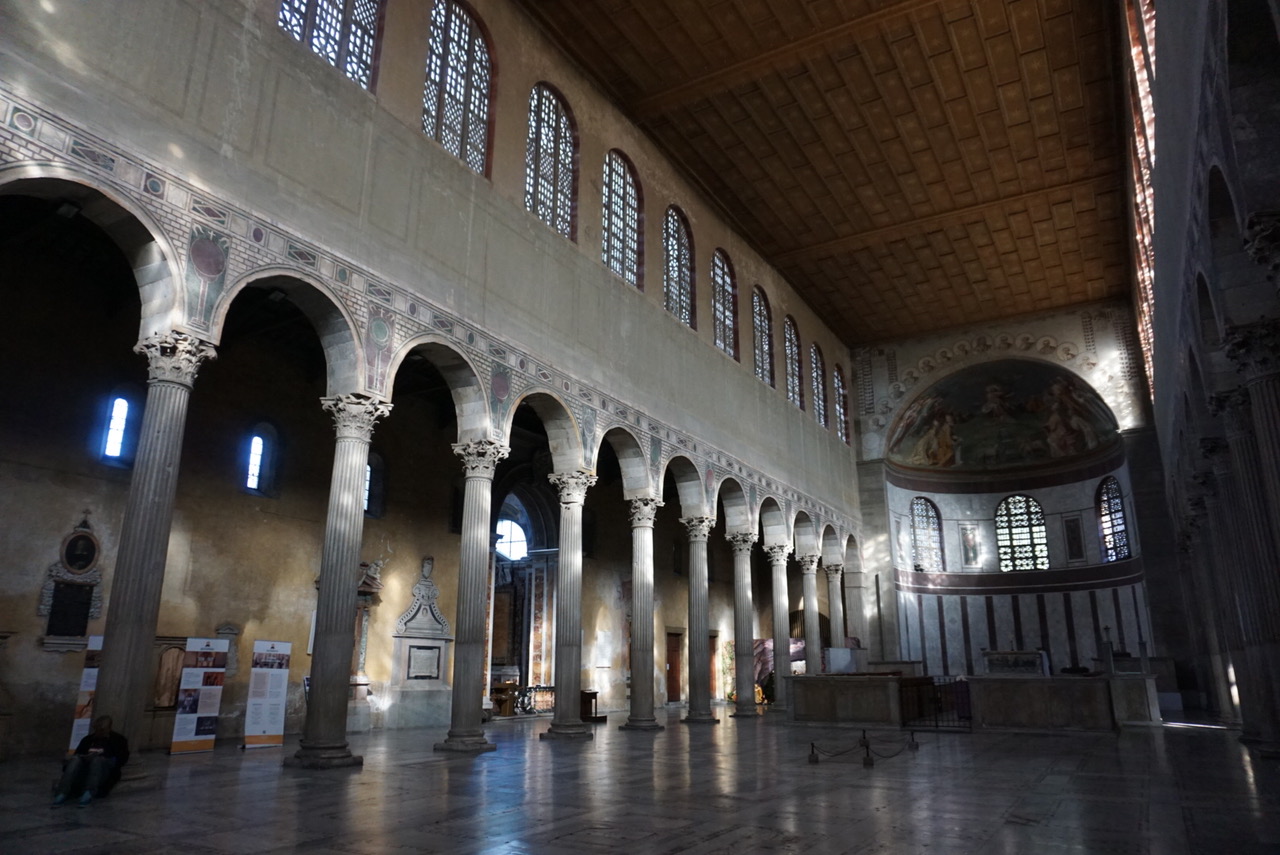The ghosts of Rome: returning home. Reflections in the twilight of another year.
“As the tree’s sap doth seek the root below / In winter, in my winter now I go, / Where none but Thee, the eternal root / Of true love, I may know.” — John Donne.
I. As Gogol noted, there is animation in Rome’s monuments. Yet in the winter Covidian light the architecture appears muted, reflecting back on us another season of pandemic solitude. The scientific or economic data only partially reveal this solitude, which Pope Francis addressed from his window on the Piazza San Pietro on Christmas Day.

The telegiornali, the broadcast news, provide a daily fog of statistics about contagion and death, and also the financial response: from cycling stock shares to canceled Christmas markets, such as the one marking Piazza Navona by its absence.

These sites, along with the bulwark of Castel Sant’Angelo over the Tiber, impose this solitude on us as they stand with few visitors. To walk by or through them allows you to enter into this solitude: they tempt you to imagine by contrast a more crowded presence; and one can think on the spirit presence of visitors long past and those to come.

II. I did not find it easy to complete this imaginative leap in these vast spaces, so cold and hard in the winter light. Smaller spaces spoke more directly to me of this presence, as when standing outside the Church of the Ospitale Santa Francisca Romana in Trastevere, or observing a statue in its private niche in the Piazza Capo di Ferro.


Here the spirit life, that imagined vision, came into greater clarity.
III. These façades and stonework create the sense that Rome is a city of barriers and gates, behind which the ghosts may remain concealed. We may see them, or sense them, through the bars and pillars, like the ancient inscriptions at the base of the Aventine hill: scarcely decipherable and intriguing.

Or we view them as layers of hidden history in the Roman forum: they lie before us, though we are kept at a distance.

But then, from another angle, the gate swings open and the past appears to invite us to gaze more openly upon its face and find the features of significance in the shadows they cast.

The threshold invites our crossing. In its melancholy way, our solitude moves us to metaphor and we follow our own ghosts in our inner lives. These barriers are external masks and structures that, like the screens of scientific and economic data, reinforce our estrangement not only from one another, or the past, but also ourselves. We find that what is “familiar,” that which is closest to us – our selves, our ghosts – remains hidden from view, and we neglect what is near for what is far.
But paradoxically the solitude offers us also an opening to greater communion with our spiritual condition. Science, data, commerce throw up barriers that, rightly understood in the wholeness of the humanities, contain entrances to pathways on which we can better ponder the abiding unity of body, mind, and spirit.



IV. On the evening walk, a more lonesome passeggiata in these times, we can find company in ghosts and spirits.

Piazza Navona becomes populated again in the richness of imaginary memory that leaps into the fourth dimension, summoning the ghosts of Christmases past and future. The mascherine, the little masks, of the passersby not only possess value, totemic and otherwise, against the Covidian virus; they also remind us of the world behind our masks, our inner world, that connects us in our solitude to the greater world.
“Churches are best for Prayer, that have least light,” wrote John Donne. On the Aventine, above the ruins, stands the basilica of Santa Sabina, one of the oldest churches in Rome. Now, in this December of our briefest days, we can sit in solitude there. It is and is not solitude, for in the dimness that light shines more brightly, reminding us of the meaning for the season.










Leave A Comment